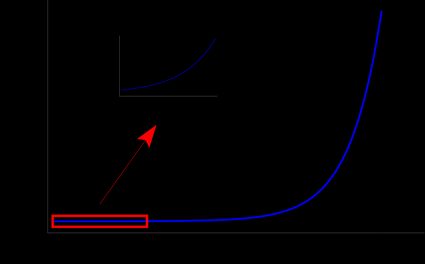Generation Time Calculator
Exponential growths model many phenomena, from biology to finance: with this bacterial generation time calculator you will discover how to calculate bacterial growth over time, its main features, and parameters. Here you'll learn:
- The rules of bacterial population growth;
- How to calculate the bacterial growth rate; and
- What is generation time of bacteria populations.
If you want to find out more about bacterial population growth, why it is important, and about an interesting bacterial experiment, then keep on reading!
What is exponential growth?
Exponential growth models are used when a quantity, a function, or, in our case, the size of a bacteria population increases over time by a constant percent increase per time unit, with the size of the increment depending on the value of the function at the last step. This form of bacterial growth is essential to the modern world, including the cleaning water in a wastewater plant!
Exponential growth models often describe functions with "lazy" beginnings followed by explosive increases; exponentials are, in fact, the fastest-growing functions in mathematics.
Learn more about these modes with our exponential growth calculator!

We got a taste of exponential growth during the coronavirus pandemic: a few cases one day, a little bit more the day after, and then things went out of control: without precautions, the initial phases of an epidemic follows the exponential — then, luckily it slows down.
How do we calculate the generation time of bacteria?
The equation that controls the exponential growth is:
where:
- — Population at time
- — Initial number of bacteria, at the starting time, ;
- — Growth rate, that is the increment per time unit; and
- — Elapsed time.
Often, the time is set to , which simplifies the equation to:
This is how to calculate the bacterial growth rate, , we rearrange the formula:
What is generation time?
A commonly used quantity in the study of populations is the generation time, , that is, the required time for the population to double in size through binary fission:
The doubling time is:
We have a tool that teaches you how to calculate generation time in a cell culture: the cell doubling time calculator.
What if we look at things in reverse?
The exponential model for bacterial population growth can be used to model a reduction in the number of individuals, similarly to the log reduction model (discover it with our log reduction calculator).
Researchers ; not all of the individuals would survive in the face of a growing viral infection. In mathematics, this translates to a negative growth rate, , associated with an exponential decay.
The doubling time in this "reversed model" corresponds to the half-life; you can try our half-life calculator, too!
Testing our generation time calculator
On the 24th of February 1988, in a laboratory at Michigan State University, the longest evolutionary experiment in history began. Twelve identical populations of E. Coli bacteria were left to evolve independently. In 2021, the experiment reached over 70 thousand generations, witnessing mutations on every possible nucleotide of the bacteria's genetic code.
Daily, 1% of each population is transferred and primed to grow for another day: the curbing of 99% of the individuals daily is necessary because of exponential growth: let's try our bacterial growth calculator with this experiment.
Let's start with just 12 bacteria, one for each population. The growth rate of E. coli in the experiment is , which in turn corresponds to a doubling time of hours. Let's also say that the bacterial population is allowed to grow without limitations.
Now we input all of the values in the generation time calculator, assuming a day has passed:
It may not look impressive, it's the population of a small village, after all. But the day after this, the number would increase to 100,000, which is a modestly sized city. And at the end of the third day, we would have 10 million bacteria, as big as Tokyo. After a week (168 hours), the number of bacteria would be bigger than the number of stars in the Milky Way (we use this number in the Drake equation calculator):
The higher the growth rate, the shorter the generation time of bacteria. Remember to keep an eye on your colonies every now and then!
FAQs
What is exponential growth?
Exponential growth is a phenomenon where a quantity grows following an increment controlled by the exponent, and not a multiplicative coefficient. This implies slow initial increases, followed by explosive growth.
What is bacteria growth?
Bacterial growth is the process by which a population of microorganisms increases. The initial phase of the growth follows an exponential law, however, due to the limitedness of resources, this soon plateaus.
How fast do bacteria grow?
The speed with which a bacterial population grows is controlled by its generation time, that is, the time required for a doubling in the size of the population. Escherichia coli, a commonly studied bacteria, has a doubling time of about 20 minutes.
How do I calculate the doubling time of a population?
The doubling time td of a population depends on its original size, on the population at a given time t, and on the value of t itself, following the rule:
td = t × [ln(2) / ln(N(t) / N(0))]